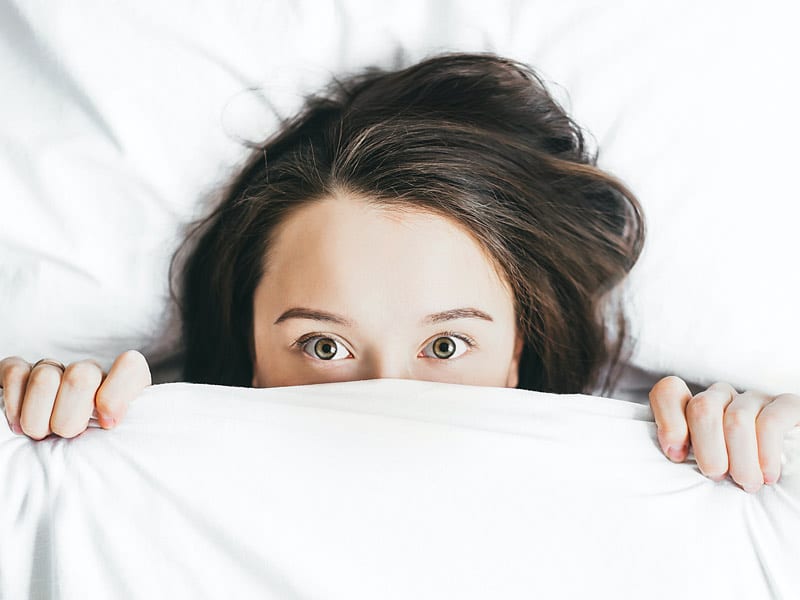One-third of our lives are spent sleeping, but over time, sleep has become unappreciated. In the world’s current pace, everybody is consumed in using their 24 hours a day, seven days a week. Sleep has become such an interference in our daily activities that we often forget its benefits and the implications of its loss.
There are two main phases in sleep – rapid eye movement sleep (REM) and non-rapid eye movement sleep (NREM). NREM is further divided into four stages. (1) Different stages of NREM are characterized differently.
Stage 1 NREM is a shallow state as it is the transition from wake to sleep. It lasts for 1-7 minutes, while stage 2 NREM lasts for 10-25 minutes. (2) In stage 2 NREM, individuals are more difficult to arouse. It also consumes half of the sleep episode.
Slow-wave sleep is a combination of stages 3 and 4 NREM. Both stages are characterized by high-voltage and slow-wave activity on EEG. (2)
Random eye movement or REM is the dream phase of sleep. This phase’s duration lengthens as the sleep episode progresses. Brain wave activity becomes desynchronized, body movements are reduced, and the eye moves rapidly in this phase. This phase is important for memory consolidation. (2)
Sleep serves a multitude of functions. It is a break for our bodies to recuperate. It is a state of reduced body movement and electromyographic activity, reduced responsiveness to external stimuli, reduced breathing rates, and altered body position and brain wave architecture assessed by polysomnography. (3)
We lose our consciousness in exchange for the restoration of bodily functions such as muscle repair, tissue growth, protein synthesis, and release of many of the important hormones for growth that occur primarily during sleep. The ability to think, to be vigilant and alert, and sustain attention are functions of sleep. (4)
What Happens in our Bodies During Sleep?
During sleep, the heart rate and blood pressure vary. Decreased heart rate and blood pressure are noted in the NREM phase, but sudden movements and arousal during sleep may cause an increase in heart rate and blood pressure.
Respiration and ventilation in sleep also differ depending on the phase of sleep. During REM, there is erratic ventilation and respiration. In NREM, a decrease in ventilation and respiration is noted. Several factors, such as reduced ribcage movement increased upper airway resistance, and reduced pharyngeal tone, contribute to this hypoventilation. (1)
Cerebral blood flow is also significantly reduced in NREM. Metabolic rates are also decreased in NREM. On the contrary, during REM, there is increased blood flow in certain regions of the brain, like in a state of wakefulness. (1)
Hormone secretion is influenced by sleep. Late in the evening, thyroid hormones are secreted, while for growth hormones, it occurs in the early phase of sleep. (1) The circadian rhythm governs the sleep-wake cycle, and it synchronizes the body to daytime and nighttime. Aside from the sleep-wake cycle, physical activities, thermoregulation, and hormone secretion are also influenced. One main hormone affected by the circadian rhythm is cortisol.
Cortisol is the main glucocorticoid of the body. It is widely known as the stress hormone, and its release follows the circadian rhythm. (10) The hypothalamic–pituitary–adrenal axis (HPA axis) is the pathway of both sleep and stress response. Disruptions that affect the HPA axis will also disrupt sleep and cortisol secretion. Dysfunctions in cortisol secretion would also cause sleep disturbances.
Another function of sleep is its ability to regulate our emotions. Inadequate sleep takes a toll on our psychological well-being leading to mood disorders. Disturbance in sleep has long been associated with mental health difficulties. At the same time, mental health problems create subsequent sleep disturbances making it a difficult cycle to stop.
One mental health problem affected by sleep disturbances is anxiety. More than a quarter of U.S. adults experience anxiety at some time in their life. (5) Women are more affected by anxiety disorders than men. In the year 2001 to 2003, 23.4% of females in the U.S. adult population were affected, while 14.3% of males were affected. (5)
Anxiety is defined as a psychological, physiological, and behavioral state that is induced in humans in anticipation of a future threat. It is part of our daily life. In cases where the mind fails to cope with the daily stresses, anxiety becomes pathologic, resulting in anxiety disorder.
The Relationship Between Sleep and Anxiety
Sleep and anxiety have a complex relationship. The question would always be – does anxiety cause sleep disturbance, or does sleep disturbance cause anxiety?
Disturbance in sleep could increase the risk of developing anxiety. A person with a sleep disorder such as insomnia or obstructive sleep apnea is 17 times more likely to have clinical anxiety. (7) At the same time, having anxiety could affect sleep. Whether pathological or not, anxiety’s feature is increased arousal or alertness, which leads to alteration in the sleep-wake cycle. (6)
The relationship between sleep and anxiety is not fully understood. The following are the things that we know:
Sleep Deprivation Causes Anxiety
Sleep plays a key role in protecting our emotional well-being. (8) Sleep deprivation is a trigger for emotional difficulties, and in a state where there is chronic sleep disruption, emotional instability ensues. This exacerbates the conditions of individuals with preexisting mood disorders. One theory that explains anxiety in sleep deprivation is the loss of cognitive control of emotion. Cognitive control of emotions is only found in humans. (11) In cases where sleep is constantly disrupted, individuals lose their grasp on their cognitive control of their emotions resulting in bursts of anxiety and mood imbalance.
Anxiety Causes Sleep Disturbances
Sleep disturbance is the second most common symptom of mental distress. (6) Anxious individuals are often found to ruminate and overthink things that subsequently causes them to lose sleep. In insomnia, a key component that drives the body from losing sleep is hyperarousal. (11) This is due to neurobiological and psychological hyperactivity.
Another mechanism that could explain sleep disturbance due to anxiety is sleep reactivity. This is a trait of a person wherein one loses sleep in states of stress. (12) A highly reactive sleep system causes deterioration of a person’s sleep when stressed, while sleep in those individuals who have low sleep reactivity is not much disturbed. (12) Anxiety plays a big role in this theory, as anxious people are more likely to be stressed. Coupled with a high reactive sleep system, these people will likely present with insomnia.
In summary, the key points of this article are as follows:
- Sleep hygiene is important in maintaining our health and well-being despite the fact that its mechanisms are not yet fully understood.
- Sleep and anxiety have an intricate relationship. Sleep disturbances may occur and cause anxiety, while anxiety disorders could cause an individual to develop problems with sleep.
About the Author: Tee Villanueva, MD. Long before her career as a doctor, Tee Villanueva always had her interest focused on writing. She has worked as a creative and content writer even while in medical school. Currently, she is a licensed resident doctor in Internal Medicine but loves that through writing, she can provide information about complex diseases and treatments to the general public. Combining her clinical knowledge and writing skills, she delivers complicated information in an easy to understand manner. When not writing and going on duty in the hospital, she likes to travel, cook, or watch Netflix.
References:
- Brinkman, J.E., Reddy, V., & Sharma, S. (2020) Physiology, Sleep. In: StatPearls [Internet]. Treasure Island (FL): StatPearls Publishing. Available from: https://www.ncbi.nlm.nih.gov/books/NBK482512/
- Colten, H.R., & Altevogt, B.M. (2006). Sleep Disorders and Sleep Deprivation: An Unmet Public Health Problem. Washington (DC): National Academies Press (US). Sleep Physiology. Available from: https://www.ncbi.nlm.nih.gov/books/NBK19956/
- Zielinski, M.R., McKenna, J.T., & McCarley, R.W. (2017). Function and mechanism of sleep. AIMS Neurosci. 2016; 3(1): 67–104. https://www.ncbi.nlm.nih.gov/pmc/articles/PMC6456824/
- Worley, S.L. (2018). The extraordinary importance of sleep: the detrimental effects of inadequate sleep on health and public safety drive an explosion of sleep research. P T., 43(12): 758–763. https://www.ncbi.nlm.nih.gov/pmc/articles/PMC6281147/
- National Institute of Mental Health. (2017). Any anxiety disorder. Retrieved from https://www.nimh.nih.gov/health/statistics/any-anxiety-disorder.shtml
- Staner, L. (2003). Sleep and anxiety disorders. Dialogues Clin Neurosci, 5(3), 249-253. Retrieved September 14, 2020, from https://www.ncbi.nlm.nih.gov/pmc/articles/PMC3181635/.
- National Sleep Foundation. (2020). The complex relationship between sleep, depression, & anxiety. Retrieved from https://www.sleepfoundation.org/excessive-sleepiness/health-impact/complex-relationship-between-sleep-depression-anxiety
- Simon, E.T., et al. (2015). Losing neutrality: The neural basis of impaired emotional control without sleep. Journal of Neuroscience, 35 (38) 13194-13205. https://www.jneurosci.org/content/35/38/13194
- Oster, H., et al. (2017). The Functional and Clinical Significance of the 24-Hour Rhythm of Circulating Glucocorticoids, Endocrine Reviews, 38(1), 3–45. https://academic.oup.com/edrv/article/38/1/3/2959892
- Thau, L., Gandhi, J., & Sharma, S. (2020).Physiology, Cortisol. [Updated 2020 May 29]. In: StatPearls [Internet]. Treasure Island (FL): StatPearls Publishing. Available from: https://www.ncbi.nlm.nih.gov/books/NBK538239/
- Kalmbach, D. A., Cuamatzi-Castelan, A. S., Tonnu, C. V., Tran, K. M., Anderson, J. R., Roth, T., & Drake, C. L. (2018). Hyperarousal and sleep reactivity in insomnia: current insights. Nature and science of sleep, 10, 193–201. https://doi.org/10.2147/NSS.S138823
- Kalmbach, D. A., Anderson, J. R., & Drake, C. L. (2018). The impact of stress on sleep: Pathogenic sleep reactivity as a vulnerability to insomnia and circadian disorders. Journal of sleep research, 27(6), e12710. https://doi.org/10.1111/jsr.12710
Photo by Alexandra Gorn on Unsplash
The opinions and views expressed in any guest blog post do not necessarily reflect those of www.rtor.org or its sponsor, Laurel House, Inc. The author and www.rtor.org have no affiliations with any products or services mentioned in the article or linked to therein. Guest Authors may have affiliations to products mentioned or linked to in their author bios only.
Recommended for You
- How to Support Emotional Regulation in Neurodivergent Children Using Humor - January 8, 2026
- Mental Health Chatbots: How to Use Them Safely Without Replacing Your Therapist - January 5, 2026
- 3 Tools to Use Anxiety for Growth - January 2, 2026





